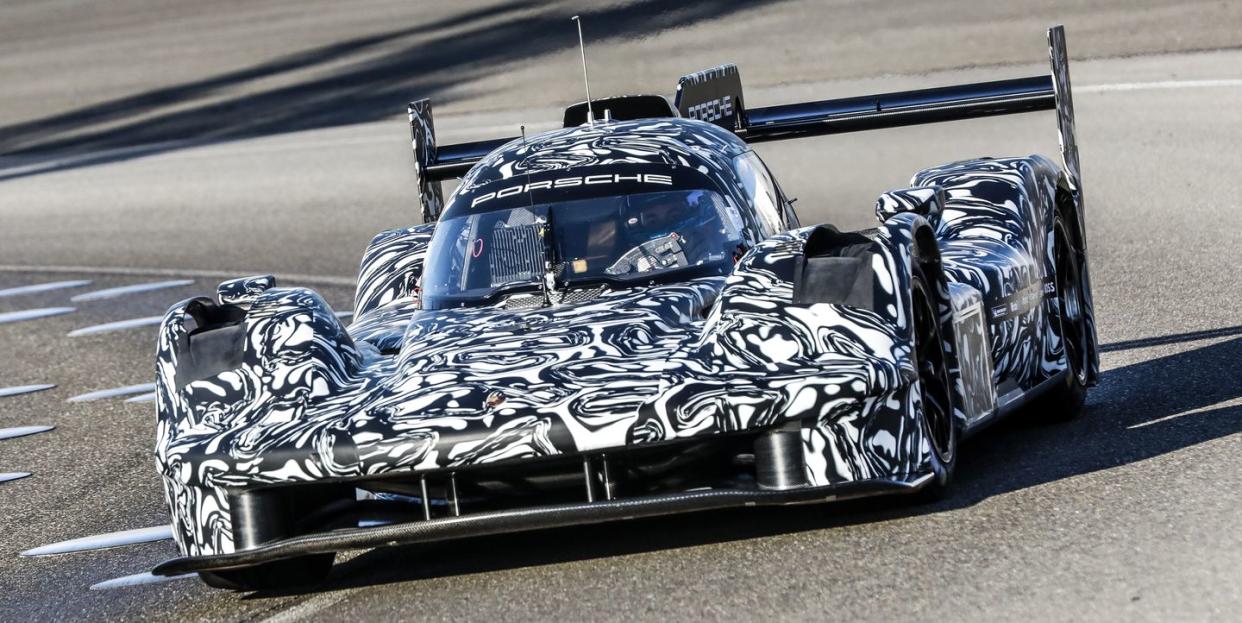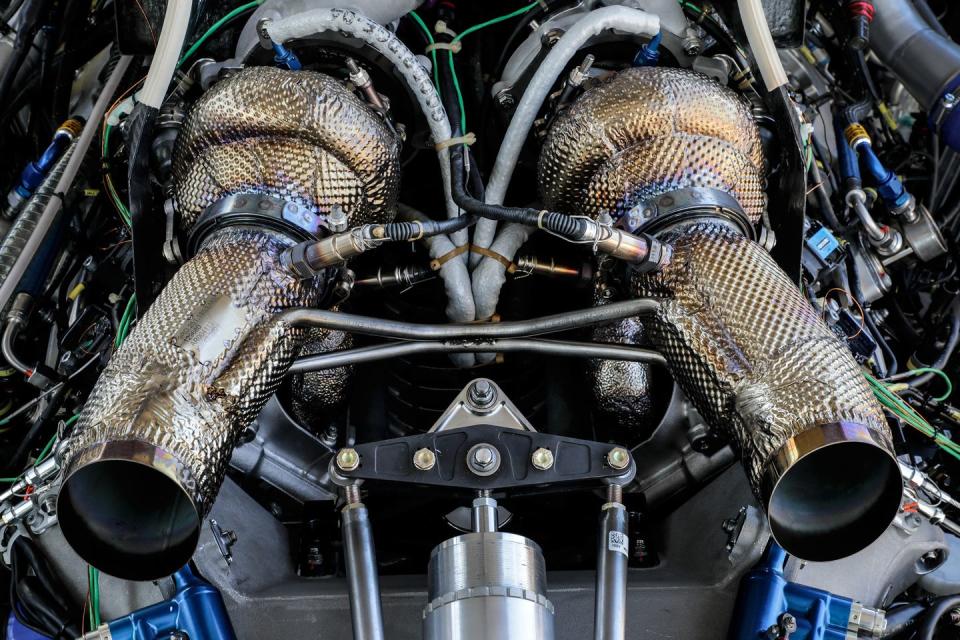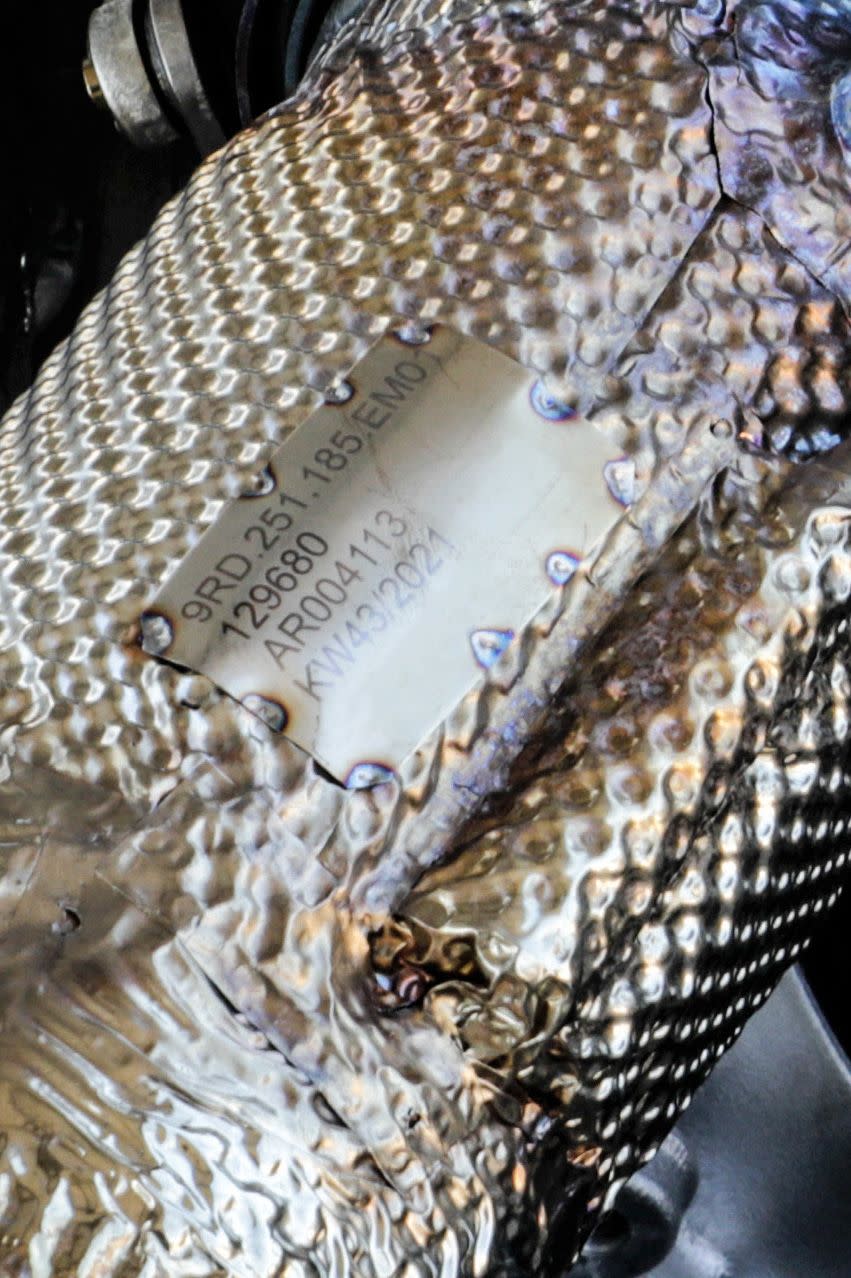Porsche LMDh Race Car Will Have Twin-Turbo V-8 Making Up to 697 HP

Porsche is making its return to prototype racing next year, in search of more overall wins at Daytona, Sebring, Le Mans and elsewhere. For a little over a month now, the automaker has been teasing the new LMDh car in pictures and video, both to get fans excited and, perhaps, as a warning shot to its competitors. Today, the trickle continues: Porsche has confirmed its LMDh car will use a V-8.
#PorschePenskeMotorsport - The brand-new #Porsche LMDh prototype turned it's first laps at Weissach with works driver @FredMako1 behind the wheel. How do you like our car for the 2023 @FIAWEC and @IMSA championships?#PorscheLMDh @Team_Penske @24hoursoflemans pic.twitter.com/HrVIqXTvMe
— Porsche Motorsport (@PorscheRaces) January 14, 2022
Naturally, Porsche is being selective in what information it reveals. It describes the V-8 as a "large-capacity twin-turbo V-8 unit" powered by some sort of renewable fuel and outputting between 644 and 697 hp depending on Balance of Performance. This V-8 is based on the twin-turbo 4.0-liter used in various Cayenne and Panamera models—plus other cars in the VW Group—though in a video posted from the Weissach test, the LMDh engine sounds quite different than a Cayenne Turbo's. To our ears, it sounds like it has either a flat-plane crankshaft, or some sort of trick exhaust system that sends evenly spaced pulses to either tailpipe (a la BMW M's long-running twin-turbo V-8).
Porsche notes in its press release that LMDh regulations "allow a great deal of freedom in terms of displacement, design and number of cylinders." The automaker also said the regulations stipulate that the engine may rev no higher than 10,000 rpm, not exceed 110 db in fly-by noise testing, and weigh no less than 396.8 lbs. So it seems very much in the realm of possibility that Porsche has modified its road-car V-8 significantly for its LMDh car, maybe even increasing displacement, as the press release makes no specific mention of the engine's size here.
"We were spoiled for choice with the engine for our LMDh prototype, because the product range offers several promising baseline units," said Porsche Motorsport boss Thomas Laudenbach in a statement. "We decided on the V-8 biturbo, which we feel offers the best combination of performance characteristics, weight and costs. The kick-off to the active test program was an important step for the project."
(Really, a V-8 seems like the only natural choice, though, as the 2.9-liter twin-turbo V-6 Porsche uses is an Audi development, and a flat-six would likely be too wide for the Multimatic chassis.)
The V-8 will be pared with a hybrid system common with other LMDh cars, consisting of a battery by Williams Advanced Engineering, a motor-generator from Bosch, and an Xtrac gearbox. LMDh regulations state that the engine and motor-generator will combine for no more than 671 hp at the wheels.

An image released by Porsche today shows what's under the rear clamshell of the LMDh car. Prominently featured are the two turbochargers, which as with its road-going V-8, live in the valley between the two cylinder banks. They're connected to two extremely short exhaust pipes. It's a little difficult to tell what else is going on here—no doubt by design—though just below the exhaust, we can see components finished in the distinctive shade of blue supplier Multimatic uses for its dampers. Porsche used Multimatic dampers very successfully on its Le Mans-winning 919, and partnered with the Canadian firm for its LMDh chassis.

Attached to the heat-shielding on the left-hand exhaust is a plate with what appears to be information on the part. The number at the top seems to follow Porsche's typical part nomenclature, which has a three-character chassis code at the beginning. This one starts with 9RD, which could be the internal code for the LMDh car. Porsche has used the 9Rx designation twice before—its abandoned LMP900 race car was codenamed 9R3, while the successful RS Spyder LMP2 was codenamed 9R6.
Incidentally, the RS Spyder was campaigned by Porsche and Team Penske, which have rejoined forces for this new LMDh program. The RS Spyder is also the only other Porsche sports racing car to use a V-8.
Porsche aims to have its LMDh car at its first eligible race, the 2023 Rolex 24 at Daytona. So over the next year, expect to learn a lot more about this car.
You Might Also Like

 Yahoo Movies
Yahoo Movies 
